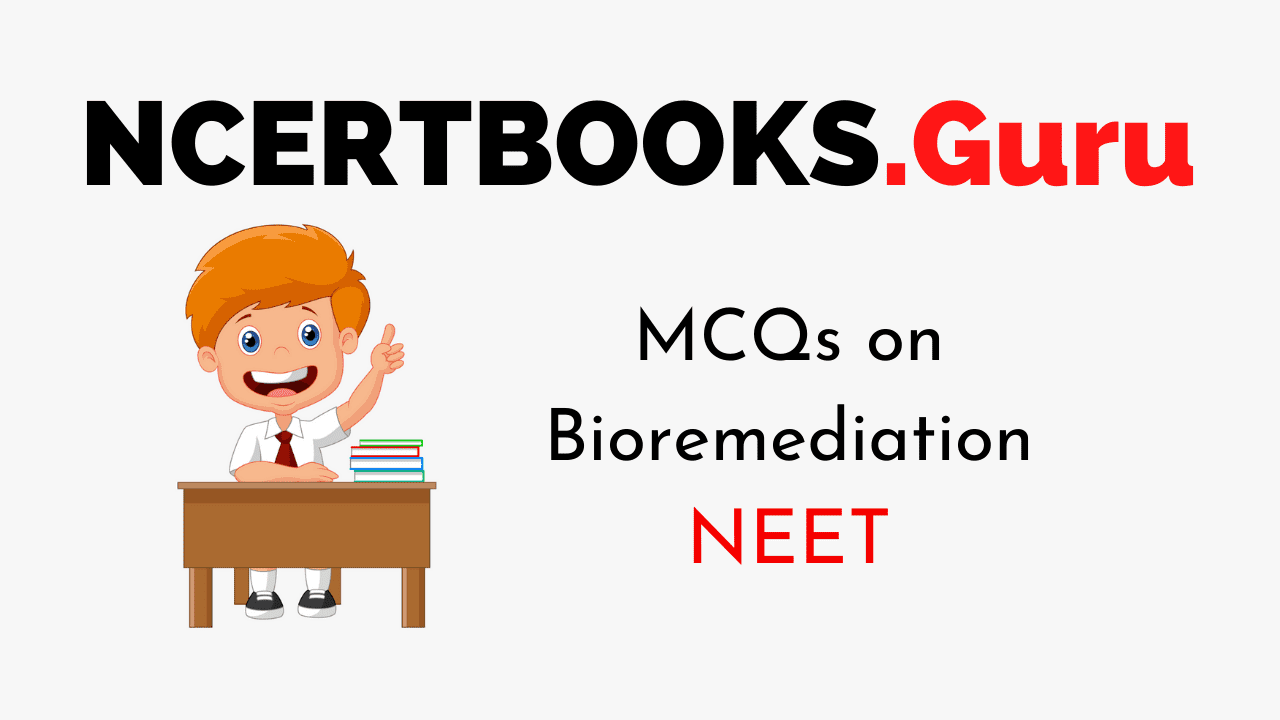NEET Biology is the scoring paper in the medical entrance examination. Here, you will discover the NEET Biology MCQ Questions for all Concepts as per the latest syllabus. Practice more on a regular basis with these NEET Biology objective questions on air pollution and improve your subject knowledge & problem-solving skills along with time management. NEET Biology Bioremediation Multiple Choice Questions make you feel confident in answering the question in the exam & increases your scores to high.
MCQs on Bioremediation
1. Bioaugmentation involves
(a) eliminating sludge
(b) plants usage for bioremediation
(c) addition of microbes to a cleanup site
(d) bioventing
Answer
Answer: (c)
2. This cleanup approach includes removal of groundwater or soil from its natural setting to permit for bioremediation
(a) Bioaugmentation
(b) in situ bioremediation
(c) ex situ bioremediation
(d) Phytoremediation
Answer
Answer: (c)
3. At this stage of wastewater treatment, methanogenic microbes are the most significant
(a) Sludge digestion
(b) Primary treatment
(c) Secondary treatment
(d) Biological oxidation
Answer
Answer: (a)
4. This bioremediation technique includes mixing contaminated water and soil, fertilizers and carbon dioxide in a bioreactor to stimulate biodegradation
(a) Composting
(b) Slurry-phase bioremediation
(c) In situ hybridization
(d) Biopile treatment
Answer
Answer: (b)
5. Bioremediation
(a) usage of microbes to create new organisms
(b) usage of anaerobic bacteria to create new antibiotics
(c) usage of microbes to destroy environmental pollutants
(d) usage of aerobic bacteria to create new vaccines
Answer
Answer: (c)
6. Ananda Chakraborty received the first U.S. patent for a GM entity. The entity was
(a) The GloFish
(b) a transgenic mouse expressing the growth hormone gene
(c) Cloned E.Coli
(d) Pseudomonas engineered to degrade petroleum
Answer
Answer: (d)
7. A process using microbes to convert toxic industrial wastes to less toxic or non-toxic compounds is
(a) Precipitation
(b) Complement fixation
(c) Bioconversion
(d) Bioremediation
Answer
Answer: (d)
8. _____________ bacterium can withstand the dosage of radiation, which are several times higher than what human cells can tolerate
(a) Escherichia coli
(b) Conus magus
(c) Deinococcus radiodurans
(d) Staphylococcus aureus
Answer
Answer: (c)
9. The bioremediation process involving the usage of plants to degrade pollutants is
(a) Composting
(b) Biopile
(c) Phytoremediation
(d) Land farming
Answer
Answer: (c)
10. This is not an indigenous microbe used for bioremediation
(a) Pseudomonas aeruginosa
(b) Piscirickettsia salmonis
(c) Phanerochaete sordida
(d) E. coli
Answer
Answer: (b)
